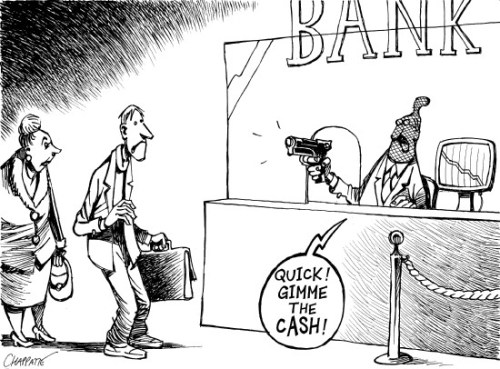

Depending on the situation or comparison, various valuation techniques, such as enterprise value or firm value, market value, or market capitalization, may be utilized or compared. Advisory services provided by Carbon Collective Investment LLC (“Carbon Collective”), an SEC-registered investment adviser. A copy of Carbon Collective’s current written disclosure statement discussing Carbon Collective’s business operations, services, and fees is available at the SEC’s investment adviser public information website – or our legal documents here. With an understanding of what the BVPS means, Ashley can compare this result with how the company is trading on the market. But if they are trading above the book value per share, they would be considered undervalued and would be hotter on the market. The preferred stock shown above in the stockholders’ equity section is cumulative and dividends amounting to $48,000 are in arrear.
If a company was interested in increasing its BVPS amount, they have a couple of options. Next, they can look at reducing their liabilities by selling unnecessary assets or using cash flow to pay down debts. To do this, the company would use some of its earnings to purchase back shares of common stock from the market. Many companies keep a controlling number of shares for themselves already.
For example, intangible factors affect the value of a company’s shares and are left out when calculating the BVPS. When looking at the financial statements of a business, look for information about stockholders’ equity, also known as owner’s equity. When preferred shares are not present, the entire equity of the stockholders is utilized. In contrast to book value per share, enterprise value considers the market value of a company’s stock as well as its debt.
It would be best to wait for the market to arrive on the same page as you before planning to book a profit on your findings. However, this could not stop market-savvy investors from finding genuine book value plays. So, an investor must always look into the details of the book value before investing in a company. We can conclude that buying 40,000 shares increases Book Value per share from INR 10 to INR 12.5. Book value per share helps calculate the organisation’s net asset value per share. I have no business relationship with any company whose stock is mentioned in this article.
What is growth investing? A strategy that focuses on high-growth companies in hopes for significant investment returns
Book value per share helps identify whether a stock is overvalued or undervalued. A book value higher than market estimate suggests that a stock is undervalued, whereas a book value lower than market estimates indicates an overvalued stock. Savvy investors are always on the lookout for undervalued stocks because it gives them opportunities to earn high profits at a low cost. Compare that to the company’s book value of $74.67 billion and we can see that the company’s market value is over four times greater than its book value. A company that has a book value per share of $26.95 and a price per share of $846.35 would have a P/B ratio of 31.41.
Net income on a per share basis is referred to as EPS, or earnings per share. As shown at the top of this page, book value per share is expressing stockholder’s equity on a per share basis. A company that has 2.87 billion shares outstanding, and whose closing price is $114.49 per share would have a market value of $328.59 billion. This is because the figures in the books of accounts are not constantly adjusted for current changes in the market.
The resale value of such assets falls quickly, and if the asset becomes obsolete, it becomes useless. This lack of standardisation is the reason behind that muzzy book value. Incorporated in 2007, ITCONS E-Solutions Limited is a New Delhi-situated company engaged in the business of providing human resource services. However, you are responsible for all telephone access fees and/or internet service fees that may be assessed by your telephone and/or internet service provider. You further agree to pay additional charges, if any levied by Third Party Service Provider, for the facilities provided by them through the Website .
One limitation of book value per share is that, in and of itself, it doesn’t tell you much as an investor. Investors must compare the BVPS to the market price of the stock to begin to analyze how it impacts them. Comparing a company’s book value per share against other techniques of valuation is standard practice.
- The book value of a company is the difference between that company’s total assets and total liabilities, and not its share price in the market.
- In this case, each share of stock would be worth $0.50 if the company got liquidated.
- You agree and understand that the Website is not and shall never be construed as a financial planner, financial intermediary, investment advisor, broker or tax advisor.
- Book value is the amount of money shareholders would receive if a company’s assets were to be liquidated and all its liabilities paid.
- From a pure price-to-earnings standpoint, a high PE ratio is undesirable for investors.
The book value of common equity in the numerator reflects the original proceeds a company receives from issuing common equity, increased by earnings or decreased by losses, and decreased by paid dividends. A company’s stock buybacks decrease the book value and total common share count. Stock repurchases occur at current stock prices, which can result in a significant reduction in a company’s book value per common share. Book Value per share can be used by the investors for determining the equity in a company comparative to the current market value of the company, that is the current price of the stock.
In the stock market, book value per share is a benchmark that investors can use to analyse how a company’s stock is valued. If the book value is higher, it suggests that the company has potential in terms of assets and performance but the market has not been able to identify it yet which is why the market price is lower. Book value per share is also used in the return on equity formula, or ROE formula, when calculating on a per share basis.
How to increase book value per share?
So even in the Book Value Per Share preferred shares are deducted from Shareholder’s Equity. Shareholders EquityShareholder’s equity is the residual interest of the shareholders in the company and is calculated as the difference between Assets and Liabilities. The BVPS is a conservative way for investors to measure the real value of a company’s stocks, which is done by calculating what stockholders will own when the company liquidates and all debts paid up. Value investors prefer using the BVPS as a gauge of a stock’s potential value when future growth and earnings projections are less stable. Shareholders’ equity is the owners’ residual claim in the company after debts have been paid.

On the other hand, the company can also use INR 400,000 to reduce its liabilities and increase its common equity. In a precise manner, book value per share is the amount that the shareholders would receive at the time of liquidation of a company after paying off all its debt and selling its tangible assets. Needless to mention that undervalued stocks are like a four-leaf clover for stock market investors. A company’s book value can lull investors into a false sense of security, that if the company declared bankruptcy, they could still recoup their investment. However, assets sold following a bankruptcy are often sold at a steep discount, sometimes just pennies on the dollar.
Frequently Asked Questions about share price calculation formula
Preferred ShareholdersA preferred share is a share that enjoys priority in receiving dividends compared to common stock. The dividend rate can be fixed or floating depending upon the terms of the issue. However, their claims are discharged before the shares of common stockholders at the time of liquidation. Book Value Per Share The book value per share formula evaluates the actual value of the common equity for each outstanding share, excluding the preferred stock value. A higher BVPS compared to the market value per share indicates an overvaluation of stocks and vice-versa.
Market Value Per Share vs. Book Value Per Share
Often called shareholder’s equity, the “book value of equity” is an accrual accounting-based profit measure. It’s important to use the average number of outstanding shares in this calculation. A short-term event, such as a stock buy-back, can skew period-ending values, and this would influence results and diminish their reliability. A company’s balance sheet may not accurately represent what would happen if it sold all of its assets, which should be taken into account. It can indicate that the company is doing well, but it can also be a sign that the stock price has already peaked.
Book Value per Share Calculator
Using the XYZ example, assume that the firm repurchases 200,000 shares of stock and that 800,000 shares remain outstanding. Besides stock repurchases, a company can also increase BVPS by taking steps to increase the asset balance and reduce liabilities. book value per share formula In simpler terms, a company’s total equity is the net difference between assets and total liabilities. However, the total equity is a total of common stock, additional paid-in capital, and retained earnings from which treasury stock is deducted.
Financial instruments are assets, or packages of capital, that can be traded. Let’s assume Company Anand Pvt Ltd have worth $25,000,000 of stockholders’ equity, $5,000,000 preferred stock, and total outstanding shares of $10,000,000 shares outstanding. We need to calculate the book value per share for the Anand Group of companies. The book value per share and the market value per share are some of the tools used to evaluate the value of a company’s stocks. The market value per share represents the current price of a company’s shares, and it is the price that investors are willing to pay for common stocks. The market value is forward-looking and considers a company’s earning ability in future periods.
You also need to make sure that you have a clear understanding of the risks involved with any potential investment. Given that Company B has a higher book value per share, you might find it tempting to invest in that company. As you can see from these examples, book value per share can vary widely from one company to the next. This has been a guide to Book Value per Share Formula, here we discuss its uses along with practical examples. We also provide you with Book Value per Share calculator along with downloadable excel template. This shows Anand Group of a company have the book value per share of $2.